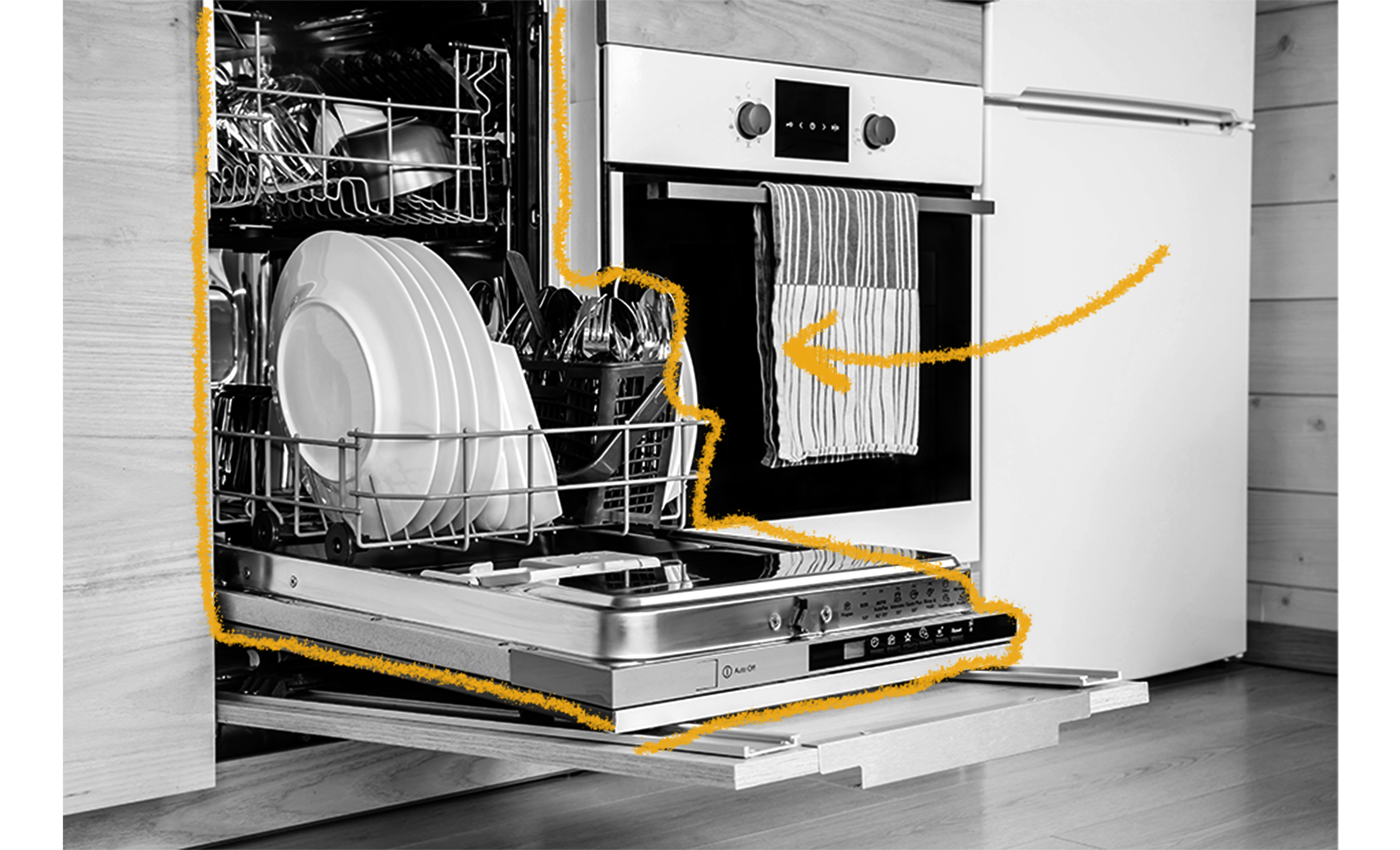The first mechanical dishwashing device was registered all the way back in 1850 by an American named Joel Houghton. Various patents were granted for similar devices, but none were practical or widely accepted. The most successful hand-powered dishwasher was invented by socialite Josephine Cochrane and mechanic George Butters in 1887.
As a socialite, Cochrane often hosted fancy dinner parties with her fine vintage china, but was dismayed when her servants chipped the plates while washing them. She resolved to wash the dishes herself, but soon became tired of the tedious work and sought a mechanical solution. In 1885, two years after her husband’s untimely death left her with mounting debt, Cochrane filed her first patent as “J.G. Cochran.” In 1886, she and a young mechanic named George Butters worked on a prototype in the woodshed behind her home. Although she didn’t invent the very first dishwasher, Cochrane’s design was the first to use water pressure rather than scrubbers to do the cleaning. It also featured racks specifically designed to hold dishes in place and did not require the user to pour boiling water over the dishes, as previous machines had. In December 1886, Cochrane received a patent for her “Dish Washing Machine.”

Soon after, she began selling her invention to restaurants and hotels. Her first order came in 1887 from Chicago’s famous Palmer House hotel. She started the Garis-Cochran Company but had trouble finding investors, most of whom wanted a man to run the business. She pressed on anyway and showcased her product at the World’s Columbian Exposition in 1893, which brought in publicity and new sales from institutions like colleges and hospitals. Around 1898, she opened her own factory with George Butters as the manager and began Cochran’s Crescent Washing Machine Company. The business sold units as far away as Alaska and Mexico, but mostly to other businesses — despite Cochrane’s efforts, domestic models still cost about $350, which was too expensive for most American households. Her company was acquired by the Hobart Manufacturing Company in 1926; Hobart manufactured dishwashers under the KitchenAid brand name, which still exists today.
The first dishwasher that incorporated most of the design elements we’d expect to see today was invented in 1924 by William Howard Livens of the United Kingdom. However, dishwashers didn’t become successful domestic appliances until the postwar boom of the 1950s. Standardized sizes and shapes developed around this time, but dishwashers were still used only by the wealthy. In the 1960s, Cochrane’s dream of household dishwashers finally became a reality when they became a common appliance in American and European homes. In the late 1990s, manufacturers began offering dishwashers with various energy conservation features, such as soil sensors and variable washing times. By 2012, over 75% of homes in the United States and Germany had dishwashers. Today, dishwashers are often considered an essential appliance and are available in many configurations and at many different price points.



